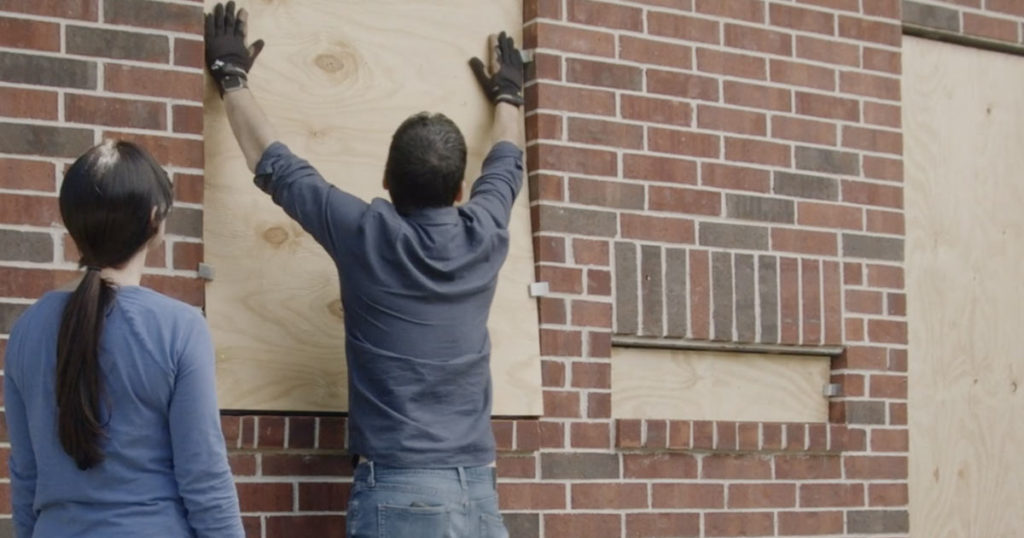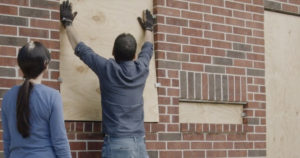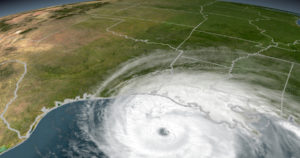
As homeowners, protecting our family and home from the devastation of hurricanes is a priority that can’t be overlooked. With the hurricane season stretching from June to November, it’s essential we take preemptive measures to secure our residences against the harsh weather conditions these storms bring. Installing plywood on our windows is one of the most effective and straightforward ways to shield our living spaces from damaging winds and debris.
The importance of hurricane protection cannot be understated, as windows are among the most vulnerable parts of our home during a storm. Without proper protection, broken windows can lead to significant damage inside the home, threaten the safety of our loved ones, and potentially lead to costly repairs. Fortunately, with the right materials and a bit of know-how, we can efficiently install plywood to safeguard our windows, giving us peace of mind that we are prepared when the weather turns severe.
Today, we’ll delve into a practical and swift approach to installing plywood for maximum hurricane protection. We’ll cover everything from selecting the correct type of plywood to ensuring it’s securely fastened, empowering you with the ability to confidently protect your home. Join us as we step through this critical process together, demonstrating that with a little preparation, keeping our home safe from the threats of hurricanes can be straightforward and uncomplicated.
Choosing the Right Plywood for Hurricane Protection
When we prepare our homes for hurricane season, selecting the appropriate plywood for window protection is crucial. Not all plywood is created equal, and for the task of shielding windows from fierce winds and flying debris, we require something sturdy and reliable. We recommend using at least 5/8-inch thick exterior-grade plywood. This thickness ensures a robust barrier without being excessively heavy to maneuver. Exterior-grade plywood is specifically treated to resist moisture, an important feature since it will be exposed to harsh weather conditions.
Furthermore, ensure that the plywood sheets are large enough to cover each window entirely with at least a four-inch overlap on all sides. This extra margin ensures that we can secure the plywood effectively around the window frame, minimizing any gaps that could allow wind to enter. It’s about creating a continuous shield that keeps everything from rain to airborne objects safely outside.
Essential Tools and Materials Needed for Hurricane Protection
Having the right tools and materials ready can make the process of installing plywood over our windows much smoother and safer. First, we need to gather our supplies, which include enough plywood to cover all windows, as previously measured. We’ll also need a circular saw or hand saw for cutting plywood to precise dimensions and a drill if adjustments are necessary at the spot.
To secure the plywood, hurricane window clips are essential—they provide a strong grip without the need for drilling holes into the window frames or walls. A measuring tape, a pencil for marking, and a hammer might also be needed depending on the characteristics of your specific installation scenario. Safety equipment such as gloves and protective eyewear ensure that we avoid injuries during the cutting and installation process. With these tools and materials prepared, we are set to start the installation process, secure in the knowledge that we are equipped to do so effectively and safely.
Step-by-Step Instructions to Secure Plywood with Hurricane Clips
Securing our windows with plywood using hurricane clips is a straightforward process, but proper execution is key to ensuring maximum protection during a storm. First, after measuring and cutting the plywood to size, as discussed earlier, we positioned the plywood over the window to check its fit. It should overlap the window frame by at least two inches on all sides. Next, we take our hurricane clips—these small yet sturdy devices are specifically designed to hold plywood securely against the window frame without the need for drilling or nailing.
To install the clips, we place them at intervals along the edge of the plywood. It’s generally best to space the clips about 18 inches apart. This spacing can be adjusted based on the size and shape of the window, but maintaining even distribution is crucial for balanced support. We push each clip onto the plywood and window frame until it snaps securely in place. The beauty of these clips lies in their simplicity; they can be installed quickly, offering strong hold and easy removal once the weather clears.
Aftercare and Storage Tips for Plywood and Clips Post-Storm
After the hurricane has passed, proper aftercare and storage of our plywood and hurricane clips will extend their usability for seasons to come. Firstly, we should remove the plywood and clips carefully. Inspecting each piece for any damage, such as cracks or warps, is crucial—if any piece is compromised, it should be replaced before the next use to ensure the integrity of our window protection.
For storage, keep plywood in a dry, flat area to prevent warping. Stacking the sheets horizontally with supports in between helps maintain their shape. The hurricane clips should be cleaned of any debris or dirt and stored in a dry container. This prevention of rust and corrosion is essential for maintaining the strength of the clips. By taking these steps, we make sure that when the next hurricane season approaches, our materials are ready and in good condition, allowing for a quick and stress-free installation.
Conclusion
It’s important to remember that preparation is the key to mitigating the risks posed by hurricanes. By choosing the right materials like plywood and securing them with Plylox Hurricane Window Clips hurricane clips, we set a strong defense against the forces of nature. Visit us at Plylox Hurricane Window Clips to explore more about how our products such as storm window clips can help protect your home efficiently and effectively. Secure your peace of mind today by preparing properly for tomorrow’s storms.




